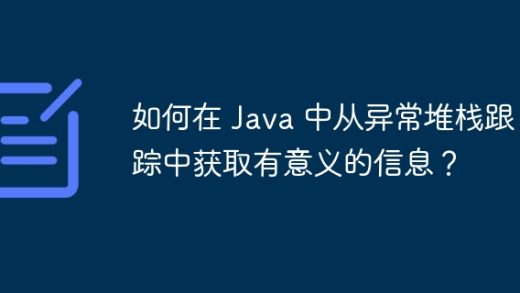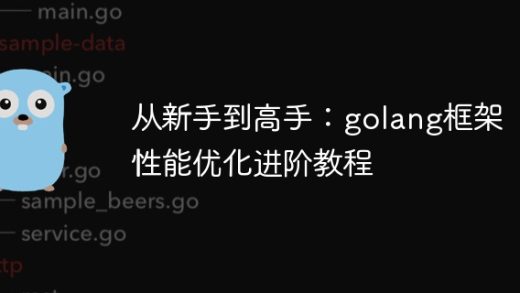使用AOP+redis+lua做方法限流的实现
收藏
知识点掌握了,还需要不断练习才能熟练运用。下面golang学习网给大家带来一个数据库开发实战,手把手教大家学习《使用AOP+redis+lua做方法限流的实现》,在实现功能的过程中也带大家重新温习相关知识点,温故而知新,回头看看说不定又有不一样的感悟!
需求
公司里使用OneByOne的方式删除数据,为了防止一段时间内删除数据过多,让我这边做一个接口限流,超过一定阈值后报异常,终止删除操作。
实现方式
创建自定义注解
@limit让使用者在需要的地方配置count(一定时间内最多访问次数)、period(给定的时间范围),也就是访问频率。然后通过LimitInterceptor拦截方法的请求, 通过 redis+lua 脚本的方式,控制访问频率。
源码
Limit 注解
用于配置方法的访问频率count、period
import javax.validation.constraints.Min;
import java.lang.annotation.*;
@Target({ElementType.METHOD, ElementType.TYPE})
@Retention(RetentionPolicy.RUNTIME)
@Inherited
@Documented
public @interface Limit {
/**
* key
*/
String key() default "";
/**
* Key的前缀
*/
String prefix() default "";
/**
* 一定时间内最多访问次数
*/
@Min(1)
int count();
/**
* 给定的时间范围 单位(秒)
*/
@Min(1)
int period();
/**
* 限流的类型(用户自定义key或者请求ip)
*/
LimitType limitType() default LimitType.CUSTOMER;
}
LimitKey
用于标记参数,作为redis key值的一部分
import java.lang.annotation.ElementType;
import java.lang.annotation.Retention;
import java.lang.annotation.RetentionPolicy;
import java.lang.annotation.Target;
@Target(ElementType.PARAMETER)
@Retention(RetentionPolicy.RUNTIME)
public @interface LimitKey {
}
LimitType
枚举,redis key值的类型,支持自定义key和ip、methodName中获取key
public enum LimitType {
/**
* 自定义key
*/
CUSTOMER,
/**
* 请求者IP
*/
IP,
/**
* 方法名称
*/
METHOD_NAME;
}
RedisLimiterHelper
初始化一个限流用到的redisTemplate Bean
import org.springframework.beans.factory.annotation.Qualifier;
import org.springframework.context.annotation.Bean;
import org.springframework.context.annotation.Configuration;
import org.springframework.data.redis.core.RedisTemplate;
import org.springframework.data.redis.core.StringRedisTemplate;
import org.springframework.data.redis.serializer.GenericJackson2JsonRedisSerializer;
import org.springframework.data.redis.serializer.StringRedisSerializer;
import java.io.Serializable;
@Configuration
public class RedisLimiterHelper {
@Bean
public RedisTemplate
limitRedisTemplate(@Qualifier("defaultStringRedisTemplate") StringRedisTemplate redisTemplate) {
RedisTemplate
template = new RedisTemplate
(); template.setKeySerializer(new StringRedisSerializer()); template.setValueSerializer(new GenericJackson2JsonRedisSerializer()); template.setConnectionFactory(redisTemplate.getConnectionFactory()); return template; } }
LimitInterceptor
使用 aop 的方式来拦截请求,控制访问频率
import com.google.common.collect.ImmutableList;
import com.yxt.qida.api.bean.service.xxv2.openapi.anno.Limit;
import com.yxt.qida.api.bean.service.xxv2.openapi.anno.LimitKey;
import com.yxt.qida.api.bean.service.xxv2.openapi.anno.LimitType;
import lombok.extern.slf4j.Slf4j;
import org.apache.commons.lang3.ArrayUtils;
import org.apache.commons.lang3.StringUtils;
import org.aspectj.lang.ProceedingJoinPoint;
import org.aspectj.lang.annotation.Around;
import org.aspectj.lang.annotation.Aspect;
import org.aspectj.lang.reflect.MethodSignature;
import org.springframework.beans.factory.annotation.Autowired;
import org.springframework.context.annotation.Configuration;
import org.springframework.data.redis.core.RedisTemplate;
import org.springframework.data.redis.core.script.DefaultRedisScript;
import org.springframework.data.redis.core.script.RedisScript;
import org.springframework.web.context.request.RequestContextHolder;
import org.springframework.web.context.request.ServletRequestAttributes;
import javax.servlet.http.HttpServletRequest;
import java.io.Serializable;
import java.lang.annotation.Annotation;
import java.lang.reflect.Method;
@Slf4j
@Aspect
@Configuration
public class LimitInterceptor {
private static final String UNKNOWN = "unknown";
private final RedisTemplate
limitRedisTemplate;
@Autowired
public LimitInterceptor(RedisTemplate
limitRedisTemplate) { this.limitRedisTemplate = limitRedisTemplate; } @Around("execution(public * *(..)) && @annotation(com.yxt.qida.api.bean.service.xxv2.openapi.anno.Limit)") public Object interceptor(ProceedingJoinPoint pjp) { MethodSignature signature = (MethodSignature) pjp.getSignature(); Method method = signature.getMethod(); Limit limitAnnotation = method.getAnnotation(Limit.class); LimitType limitType = limitAnnotation.limitType(); int limitPeriod = limitAnnotation.period(); int limitCount = limitAnnotation.count(); /** * 根据限流类型获取不同的key ,如果不传我们会以方法名作为key */ String key; switch (limitType) { case IP: key = getIpAddress(); break; case CUSTOMER: key = limitAnnotation.key(); break; case METHOD_NAME: String methodName = method.getName(); key = StringUtils.upperCase(methodName); break; default: throw new RuntimeException("limitInterceptor - 无效的枚举值"); } /** * 获取注解标注的 key,这个是优先级最高的,会覆盖前面的 key 值 */ Object[] args = pjp.getArgs(); Annotation[][] paramAnnoAry = method.getParameterAnnotations(); for (Annotation[] item : paramAnnoAry) { int paramIndex = ArrayUtils.indexOf(paramAnnoAry, item); for (Annotation anno : item) { if (anno instanceof LimitKey) { Object arg = args[paramIndex]; if (arg instanceof String && StringUtils.isNotBlank((String) arg)) { key = (String) arg; break; } } } } if (StringUtils.isBlank(key)) { throw new RuntimeException("limitInterceptor - key值不能为空"); } String prefix = limitAnnotation.prefix(); String[] keyAry = StringUtils.isBlank(prefix) ? new String[]{"limit", key} : new String[]{"limit", prefix, key}; ImmutableList
keys = ImmutableList.of(StringUtils.join(keyAry, "-")); try { String luaScript = buildLuaScript(); RedisScript
redisScript = new DefaultRedisScript
(luaScript, Number.class); Number count = limitRedisTemplate.execute(redisScript, keys, limitCount, limitPeriod); if (count != null && count.intValue() tonumber(ARGV[1]) then"); lua.append("\nreturn c;"); lua.append("\nend"); // 执行计算器自加 lua.append("\nc = redis.call('incr',KEYS[1])"); lua.append("\nif tonumber(c) == 1 then"); // 从第一次调用开始限流,设置对应键值的过期 lua.append("\nredis.call('expire',KEYS[1],ARGV[2])"); lua.append("\nend"); lua.append("\nreturn c;"); return lua.toString(); } public String getIpAddress() { HttpServletRequest request = ((ServletRequestAttributes) RequestContextHolder.getRequestAttributes()).getRequest(); String ip = request.getHeader("x-forwarded-for"); if (ip == null || ip.length() == 0 || UNKNOWN.equalsIgnoreCase(ip)) { ip = request.getHeader("Proxy-Client-IP"); } if (ip == null || ip.length() == 0 || UNKNOWN.equalsIgnoreCase(ip)) { ip = request.getHeader("WL-Proxy-Client-IP"); } if (ip == null || ip.length() == 0 || UNKNOWN.equalsIgnoreCase(ip)) { ip = request.getRemoteAddr(); } return ip; } }
TestService
使用方式示例
@Limit(period = 10, count = 10)
public String delUserByUrlTest(@LimitKey String token, String thirdId, String url) throws IOException {
return "success";
}


